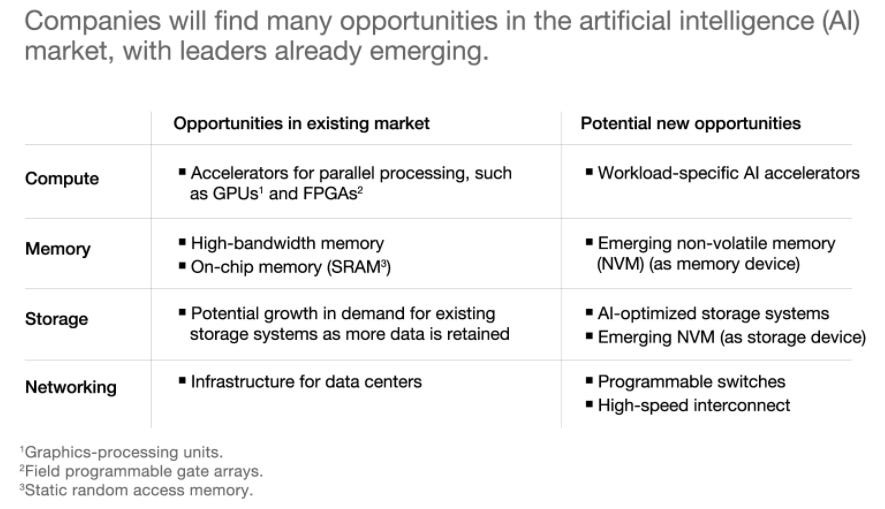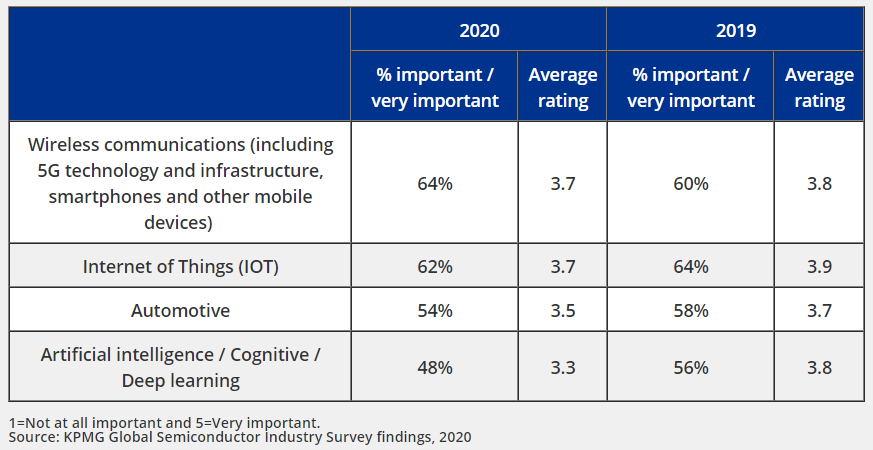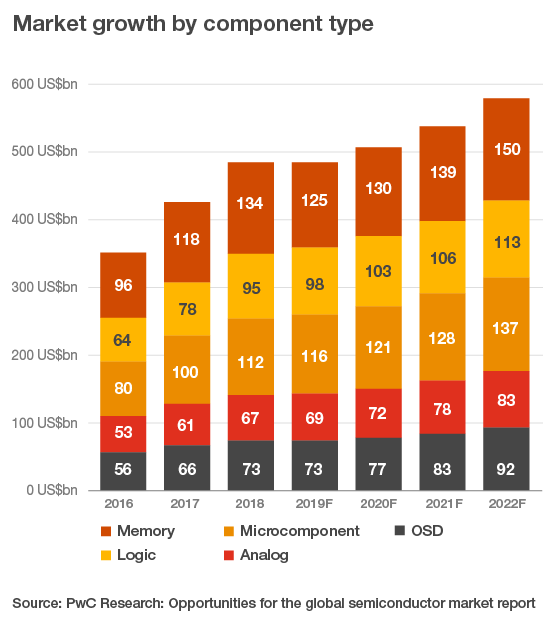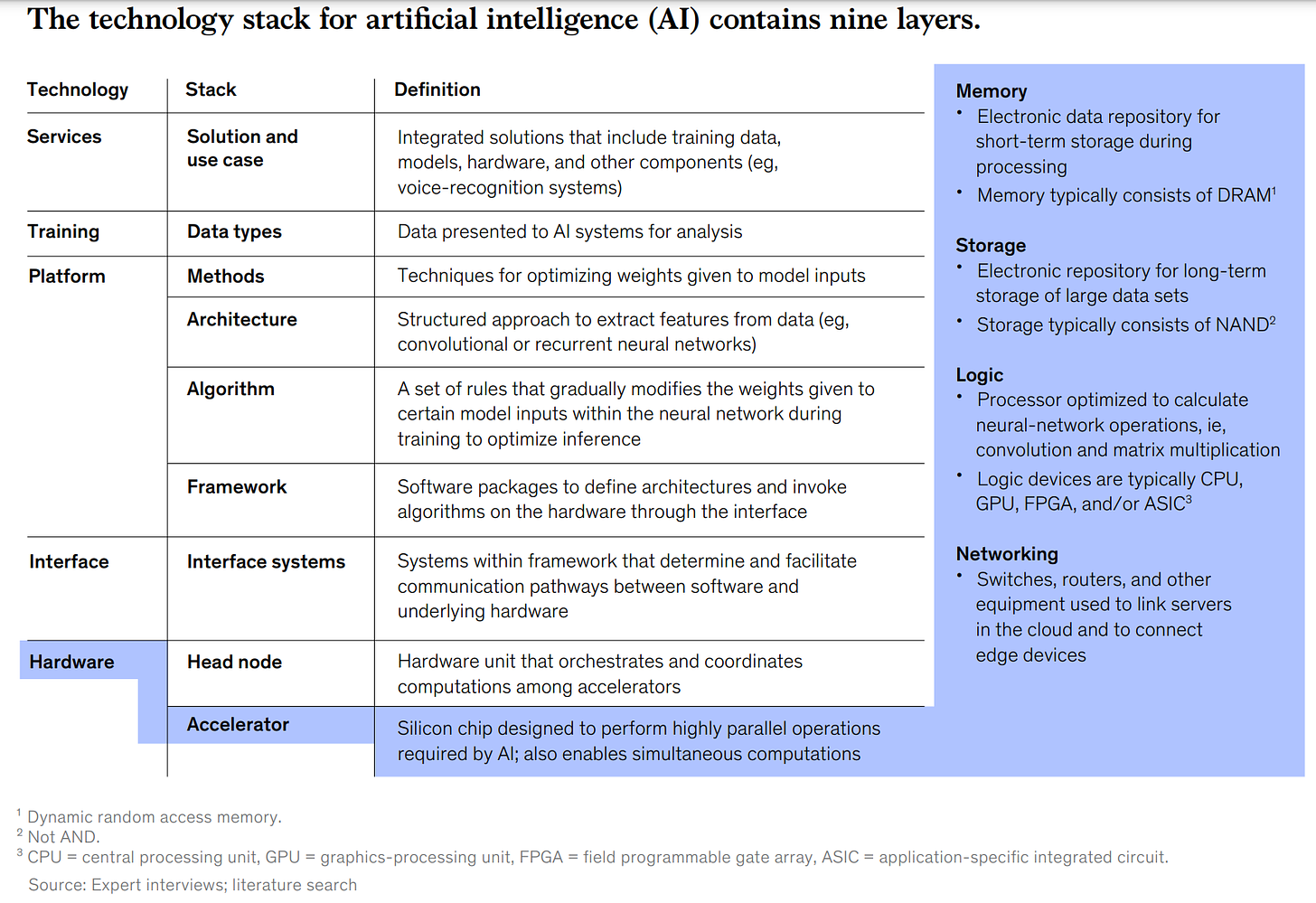Insightful newsletter of Drishtikone: Issue #277 - The Semiconductor Famine
Future of High-tech is crucially dependent on the new generation semiconductor chips. What are they, how do they impact the future tech and why is there a shortage?
Image by Scottish Guy from Pixabay
“All the time you're saying to yourself, 'I could do that, but I won't,' — which is just another way of saying that you can't.” ― Richard P. Feynman, Surely You're Joking, Mr. Feynman!: Adventures of a Curious Character
The battles of life go to those who have prepared well. Most of us are too stuck in the emotional dramas of different players around us and not able to extricate ourselves from their impact.
To think clearly and yet be aggressive, we need to be at ease. Then assess the sense of brutality and intensity of purpose in the adversary. Our responses have to based on that. Our response cannot be linked to an arbitrary sense of moral principles which we have created without calibration to the adversary’s ability to lose every moral principle.
What happened today - hundreds of Naxals attacking a few jawans and killing them shows how inadequately our estimation of their sense of brutal purpose was. More than anything, this needs to change!
We are dealing with the worst of political animals who will stop at nothing. The authorities shouldn’t too.
The attack…
It is very painful…
While we were writing today’s newsletter, news of a dastardly attack by Naxals came from Chhatisgarh. At least 22 security personal have lost their lives in Chhattisgarh's Bijapur Naxal attack on Saturday.
"22 security personnel have lost their lives in the Naxal attack at Sukma-Bijapur in Chhattisgarh," said Bijapur Superintendent of Police, Kamalochan Kashyap. (Source)
This is the report from ground zero.


This needs to be discussed with the proper background. Meanwhile, I highly recommend that you download Urban Naxals by Vivek Agnihotri on your Kindle reader app and read it immediately for a better understanding of how the entire supply chain of Naxal terror works.
It is just heart-breaking. We will discuss this topic tomorrow.
#QuestionsOfLife Ep 3: What is Death?
Yesterday, the third episode of #QuestionsOfLife program by VRA TV on #IamBuddha YouTube channel was aired. Vivek Agnihotri and Desh Kapoor discussed some deep and poignant insights with very personal experiences while reflecting on “What is Death?” Please do watch and share it with everyone you think would be interested in this topic.
Semiconductors - clogged supply chains and vanishing supply
Semiconductors are integral to almost every high-tech industry today and the key to future cutting-edge technologies. They are used in communications, computing, healthcare, military systems, transportation, clean energy, and automotive. What are semiconductors?
Semiconductors are materials which have a conductivity between conductors (generally metals) and nonconductors or insulators (such as most ceramics). Semiconductors can be pure elements, such as silicon or germanium, or compounds such as gallium arsenide or cadmium selenide. In a process called doping, small amounts of impurities are added to pure semiconductors causing large changes in the conductivity of the material. (Source)
There are different kinds of semiconductors - segregated mostly by the functionality.
Memory Chips: semiconductor memory chips store data and programs on computers and data storage devices. Eg, Random-access memory (RAM), Read-only memory (ROM) and programmable read-only memory (PROM)
Storage: The storage chips are mostly flash data storage. For example - NAND (Not ‘AND’ - a boolean statement). NAND flash saves data as blocks and relies on electric circuits to store data. When power is detached from NAND flash memory, a metal-oxide-semiconductor will provide an extra charge to the memory cell, keeping the data. The metal-oxide-semiconductor typically used is a floating-gate transistor (FGT). The FGTs are structured similarly to NAND logic gates.
Microprocessors: Microprocessors contain one or more central processing units (CPUs)
Graphic Processing Units (GPUs): Technically a type of microprocessor, Graphics Processing Unit (GPU) is capable of rendering graphics for display on an electronic device. Before the GPUs came, the graphics were handled by the CPUs.
Standard Chips (Commodity ICs): Standard chips, also known as commodity ICs, are simple chips used for performing repetitive processing routines.
Application-specific integrated circuit (ASICs): is an integrated circuit (IC) chip customized for a particular use, rather than intended for general-purpose use. For example, a chip designed to run in a digital voice recorder or a high-efficiency Bitcoin miner is an ASIC
(Sources: Investopedia / Wikipedia / TechTarget)
Why are we concerned about semiconductors today?
Because, during the pandemic, the world is reeling under a severe shortage of semiconductors supply globally.
Countries like the US are also making investments to create an inventory to handle supply in the near future.
There’s a global shortage in semiconductors, and it’s becoming increasingly serious. The US is currently reviewing its supply of the technology, following a landmark executive order from President Joe Biden. The president also pledged US$37 billion (£26 billion) to cover the short-term costs of rebuilding and securing America’s supply of semiconductors, which are a fundamental part of microchips and thus integral to everything from computers to smartphones to renewable energy and military hardware. The automotive sector has been worst affected by the drought, in an era where microchips now form the backbone of most cars. Ford is predicting a 20% slump in production and Tesla shut down its model 3 assembly line for two weeks. In the UK, Honda was forced to temporarily shut its plant as well. (Source)
The US administration is doing a review of the supply chains associated with semiconductors. In fact, the Biden administration is planning to conduct “stress tests” of hypothetical scenarios. (Source)
But why did this happen now?
A combination of mismatch in demand-supply due to pandemic and a number of geopolitical issues.
To a great extent, the chip shortage has been a ticking time bomb, building since late last year due to a few (unrelated) supply-chain disruptions. When the Covid-19 pandemic caused a precipitous drop in vehicle sales in spring 2020, automakers cut their orders of all parts and materials — including the chips needed for functions ranging from touchscreen displays to collision-avoidance systems. Then in the third quarter, when demand for passenger vehicles rebounded, chip manufacturers were already committed to supplying their big customers in consumer electronics and IT. Geopolitical factors also played a role, specifically when the Trump administration began tightly regulating sales of semiconductors to Huawei Technologies, ZTE, and other Chinese firms. Those companies began stockpiling chips essential to 5G smartphones and other products. At the same time, American firms were cut off from chips made by China’s Semiconductor Manufacturing International Corporation after the federal government blacklisted the firm. (Source)
While China’s firms will face the heat due to security concerns, the Indian government is working to take advantage of the situation.
India rushes to add capacity
The worst-hit of all the industries is the automotive sector.
Semiconductors are typically silicon chips that perform control and memory functions in a wide range of products — from computers and smartphones to cars and microwave ovens, to name a few. And there are very few of them, compared to the demand, since the pandemic. So much so that car makers like Ford, Nissan, Volkswagen, Fiat Chrysler and Toyota recently cut back production citing a shortage in semiconductors. And to fill that void that is stalling the manufacturing of electronic products, India may soon start offering a cash incentive, worth a whopping billion dollars, to companies that make semiconductor chips in India. (Source)
The production for major companies is being cut off. Meanwhile, India sees a big opportunity in this sector and is jumping in with a major incentive for the global majors to move to India.
In a LinkedIn post, Saurabh Gaur, Joint Secretary at IAS stated, “This effort of getting a semiconductor fab is building on the success of #PLI Scheme for Mobile Manufacturing which has companies committing to manufacture a billion mobile phones in India in next five years while bringing enhanced value addition in the country.” He added, “#PLI Schemes for IT hardware (aiming at the manufacturing of 50mn laptops/notebooks and tablets); telecom equipment and wearables, TWS & IoT devices are in the offing. India will be manufacturing 5 billion IoT devices for its I4.0, Smart Cities, 5G Network.” (Source)
India is a big market for telecom, computing, and automotive. So it makes sense to attract as many chip manufacturers over.
But all the major chips have a famine at hand, which will need ramping up the capacity quickly. That is where India wants to steal some of the capacity for the future. It is the right time to woo because some of the largest semiconductor manufacturers are planning major expansions.
Taiwan Semiconductor Manufacturing Co. , a major chip supplier to Apple Inc., said it would invest $100 billion over the next three years to increase production capacity as demand surges. The planned investment is a record for the world’s largest contract chipmaker as well as the broader industry, analysts said, at a time when chips are in short supply around the world. (Source)
Of all the major uses going forward, use of semiconductors within the overall technology stack for Artificial Intelligence. AI has 9 layers of technology components. Hardware as an accelerator being one. McKinsey has broken down the use of semiconductor chips into four major areas - Memory, Storage, Logic, and Networking - based on the function they are used for.
In the compute segment, there are central processing units (CPUs) and accelerators—graphics processing units (GPUs), field-programmable gate arrays (FPGAs), and application-specific integrated circuits (ASICs).
GPUs are the chips that create a supercharged form of computing and powering the next generation high-tech. They may be the answer to perform high-performance tasks like machine and deep learning, video analytics, AI-driven algorithms and decision making, and gamification. (Source: TCS)
A McKinsey report (Source - download link) shares the different technology components and stacks for AI and where the hardware - specifically the semiconductors fit in.
The opportunity is in every area of AI for semiconductor manufacturers. If they’re able to take advantage of the opportunities while altering their supply chain.

Future: semiconductors and AI
Some consulting and analytical organizations have been working on predicting the future adoption and use of semiconductors in different fields via estimates and expert surveys..
The Accenture Semiconductor Technology Vision 2019, 77% of the semiconductor executives said they had adopted AI within their business or were working to pilot the technology. 63% expect that AI will have the greatest impact on their business in the next three years.
A Redline Group survey results show that AI may allow the semiconductor manufacturers to capture 40-50% of the total value of the technology stack. In fact, going forward, many AI applications may require specialized end-to-end solutions - which may lead to substantial changes to semiconductor supply chain.
The 2021 KPMG Global Semiconductor Industry Outlook features insights from 156 senior executives from global semiconductor companies who were surveyed in the fourth quarter of 2020 about the future of the industry landscape. Key findings include: (Source)
Seventy-nine percent of semiconductor executives predict industry-wide profitability will increase this year compared to 2020, and 85% predict their companies’ revenue will also continue to increase in 2021.
Seventy-three percent plan to increase capital spending in 2021 with 71% of respondents saying they plan to spend more on R&D. Sixty-eight percent reported that executing on growth initiatives is their top strategic priority over the next three years.
Territorialism (53%) and supply chain disruption (37%) were cited as top concerns. Forty-four percent of respondents ranked making their supply chains more flexible and adaptable to geopolitical changes and other disruptions as one of their top three strategic priorities.
Sixty-three percent of respondents expect to increase headcount over the next year, while 30% identified talent risk as an issue facing the industry. Developing and managing talent was rated one of the top three strategic priorities (53%), up 13 points from last year.
When respondents were asked “How important are each of the following applications in driving your company's semiconductor revenue stream over the fiscal year?” the survey responses showed the following trend in 2020 over 2019.

PWC expects AI-related semiconductors to grow at almost 50% CAGR until 2022.
We expect the market for AI-related semiconductors to grow from a current US$6bn in revenues to more than US$30bn by 2022, a compound annual growth rate (CAGR) of almost 50%.Although AI-driven use cases are expected to find their way across every industry segment over time, their adoption will likely be determined by the size of investment in the technology, the pace of its development and the speed at which its benefits are realized. (Source)
The growth in the different types of semiconductor chips is depicted in this chart from the study.

Pandemic and the new geopolitical situation have provided India with a great opportunity to get a foot in the door in the futuristic high-tech industries with far-reaching impact on Artificial intelligence and machine learning, which can change the very way mankind will function. It is time to be aggressive.
market corner: 10 quick bytes
Only 9% of Mumbai’s ICU beds & 8.3% of ventilators still vacant - more
RIP cryptocurrencies: Number of ‘dead’ coins up 35% over last year; tally nears 2,000-mark - more
Pandemic has brought into focus the necessity of low-cost urban transport system - more
Binance-owned Indian crypto exchange WazirX crosses $200m in daily trading volume; eyes $1b in 2021 - more
Rs 25,586 cr sanctioned to 1.14 lakh loans in 5 years; women entrepreneurs top beneficiaries - more
SBI Card sees over 50 percent of its transaction from online payments - more
Foreign Portfolio Investors (FPIs) net buyers for 3rd month in a row, invest Rs 17,304 cr in Mar - more
After best-ever start to a year, $49 billion Asia IPO boom likely to taper off - more
TikTok owner ByteDance says India’s freeze on its bank accounts is harassment: Court filing - more
Personal data, phone numbers of over 60 lakh Indian Facebook users leaked online - more
nota bene
Gita Press Founder Passes Away: The president of Gita Press, Radheshyam Khemka, passed away here following a brief illness, his family members said on Sunday. He was 87. Prime Minister Narendra Modi condoled the death of Khemkaji, noting he remained active in various social services throughout his life. (Source)
AAP’s Khan Beheading Threat to Dasna Swami: Twitter on Sunday removed AAP MLA Amanatullah Khan’s tweet calling for beheading of Dasna temple’s Yati Narasinghanand Saraswati over allegations of ‘blasphemy’. As per Twitter it was in violation of Twitter policies and hence it was removed from the microblogging site. On Sunday, Khan had called for beheading of Yati Narasinghanand Saraswati for having spoken against the Prophet Mohammad. “His tongue and head should be cut off to teach him a lesson,” he had tweeted before urging Delhi Police to take action against him as ‘Indian laws’ do not allow beheading. He had even pinned this tweet on his profile. (Source)
Khalistanis use Punjab youth for free: Three Sikh youths who planted flags of Khalistan at the administrative complex Moga district on the 14th of August, 2020 after Sikhs for Justice leader Gurpatwant Singh Pannu called for the same are now languishing in jail, Sukhi Chahal, Editor-in-Chief of The Khalsa Today said. The families of the youth were cursing Gurpatwant Singh Pannu for leading the Sikh youth astray, Chahal revealed. He lured them with the promise of $2500 but did not pay any money after the deed was done. (Source)
US border crossings sky-rocket: Preliminary enforcement data for March confirms what border officials have been saying for weeks: The number of migrants crossing into the United States has skyrocketed to the highest levels in at least 15 years, and record numbers of teenagers and children arriving without parents have overwhelmed the government's ability to care for them. Though President Joe Biden and his top officials have refused to acknowledge it is a crisis, the latest data shows the new administration under extraordinary strain. (Source)
video corner: Work from Himalayas (WFH)
Have you wanted to Work from Home but with a view of the Himalayas and nature’s beauty. Well, some people are doing just that these days. Here is a video of a guy who explores some folks living the dream in Dharamkot - a hill station in Kangra district near McLeodGanj.
Today’s ONLINE PAPER: Check out today’s “The Drishtikone Daily” edition. - THE DRISHTIKONE DAILY
Nuzzle Tweets “newsletter” - with tweets and stories that we read and follow in a day in one compilation on a daily basis - Nuzzle Drishtikone - just another way to keep up with things
SUPPORT DRISHTIKONE: If you consider our work important and enriching and would like to contribute to our expenses, please click on the button below to go to the page to send in your contribution. You can select the currency (for example, INR or USD, etc) and the amount you would like to contribute. Contribute to Drishtikone
If you like this post - please share it with someone who will appreciate the information shared in this edition
If you like our newsletter, please share it with your friends and family





